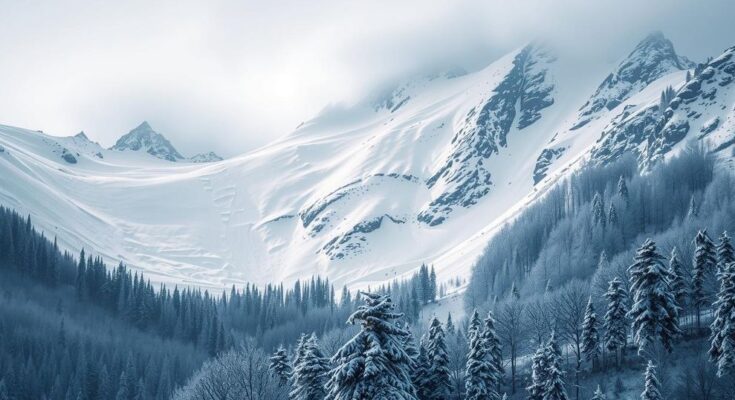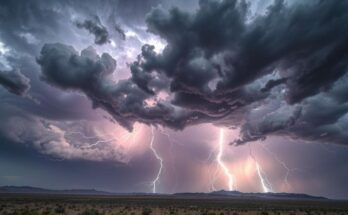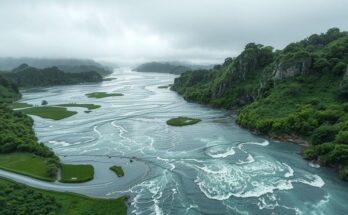Four construction workers have died following an avalanche near Mana Pass in Uttarakhand, India. The incident trapped 55 workers, of whom 50 were rescued. Ongoing rescue efforts continue for five missing workers while the injured are prioritized for medical evacuation. The avalanche highlights dangers associated with extreme weather, exacerbated by climate change.
At least four construction workers have tragically lost their lives following an avalanche that struck a substantial crew working on a highway project near the mountainous border of Tibet in India, according to a statement from the Indian Army released on Saturday. This incident occurred on Friday near the Mana Pass in the northern region of Uttarakhand, initially trapping 55 workers under the heavy snow.
Rescue efforts succeeded in extracting 50 workers from the snow, although sadly, four of these individuals later succumbed to their injuries. The army has indicated that search operations for the remaining five missing persons are ongoing, with multiple rescue teams and military helicopters actively engaged in scouting the affected area. While details regarding the number of injured workers are not specified, priority has been given to their evacuation due to the seriousness of their conditions.
Chandrashekhar Vashistha, a senior administrative official, noted that a number of the injured workers have sustained serious injuries and are receiving medical attention in hospitals. Many of the victims are migrant laborers involved in a highway widening and blacktopping project spanning a 50-kilometer stretch from Mana, the last village on the Indian side, leading toward the Mana Pass which borders Tibet.
Kamlesh Kamal, a spokesperson for the Indo-Tibetan Border Police, explained that “Rescue operations were slow due to heavy snowfall, and the area remained inaccessible.” Rescuers faced significant challenges, operating through several feet of snow amid snowstorms and poor visibility conditions. Avalanches and landslides frequently occur in the higher altitudes of the Himalayas, particularly during the winter months.
Recent scientific assessments suggest that climate change, driven by human activities and fossil fuel consumption, is intensifying extreme weather phenomena, causing rapid melting of winter snow and ice, as well as enhanced storm activity over warmer oceans. Previous disasters in Uttarakhand include a major glacier collapse in 2021, which killed nearly 100 individuals, and catastrophic floods and landslides in 2013 that resulted in the deaths of 6,000 people, raising concerns about the sustainability of development projects in the region.
The recent avalanche near Mana Pass in Uttarakhand has resulted in the tragic deaths of four construction workers, underscoring the risks faced by laborers in remote mountainous regions. Ongoing rescue operations highlight the challenges posed by severe weather and difficult terrain. This incident is a stark reminder of the growing concerns around climate change and its impact on extreme weather events, particularly in vulnerable areas like the Himalayas.
Original Source: www.cbsnews.com




